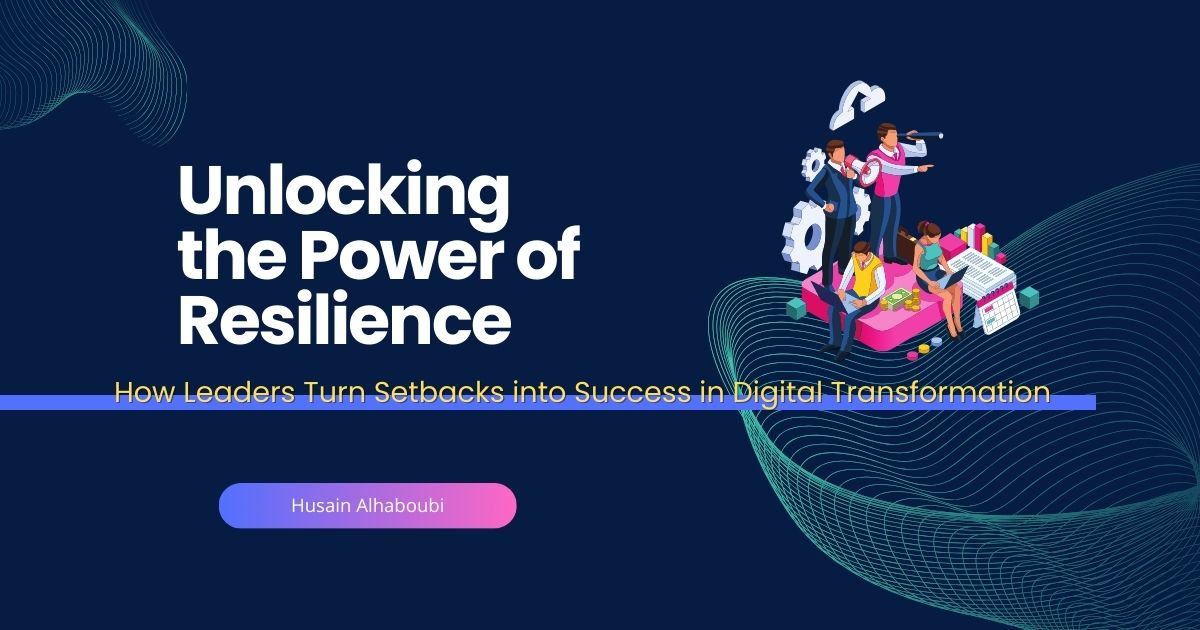
5 Keys to Leadership in Digital Transformation
Table of Contents
Leadership in Digital Transformation
Leadership in digital transformation is the integration of digital technologies into all aspects of a business. But it’s more than just a technological shift; it’s a cultural change that requires organizations to continually challenge the status quo. In my years of leadership, I’ve seen companies transform their entire operational structure through digital transformation. It’s a strategic move that involves rethinking old operating models and experimenting with a new paradigm. The ultimate goal is to improve operational efficiency and enhance customer experience, thereby increasing profitability and competitiveness.
The Essential Role of Leadership in Digital Transformation
In today’s competitive landscape, leadership in digital transformation is not a luxury; it’s a necessity. Companies that are slow to adapt risk falling behind, losing market share to more agile competitors. From my experience, companies that embrace digital transformation are more agile, efficient, and better equipped to meet customer needs. It’s not just about staying ahead; it’s about setting the pace, driving innovation, and creating new avenues for growth. Failing to transform digitally is essentially planning to fail in today’s digital-first world.
Examples of Leadership Driving Digital Transformation
Take Domino’s Pizza, for instance. They revolutionized their entire ordering process through their mobile app, enhancing customer experience and streamlining operations. This digital transformation led to a significant increase in customer engagement and sales. Another example is John Deere in the USA, who transformed their traditional farming equipment into smart machines. These machines provide farmers with real-time data to make informed decisions, optimizing yields and reducing costs. Such transformations are not just about technology; they redefine how businesses operate and deliver value to customers.
The Four Pillars of Digital Transformation Under Leadership
The four main areas of digital transformation under leadership are Business Process, Business Model, Domain, and Cultural transformation. Each of these is crucial for a holistic transformation. Ignoring any of these can lead to an incomplete transformation, which in turn can result in setbacks. A well-rounded approach is key to a successful digital transformation, and it’s a lesson I’ve learned through multiple leadership roles.
Business Process Transformation Under Leadership
Business Process Transformation focuses on automating and optimizing existing processes to improve efficiency and effectiveness. For example, automating routine tasks can free up employees to focus on more strategic activities. In my experience, companies that have successfully transformed their business processes often see a significant reduction in operational costs and an increase in productivity.
Case Study: General Electric (GE) implemented IoT sensors in its manufacturing plants to collect data on machine performance. By analyzing this data, they were able to optimize machine usage, reducing downtime and saving millions of dollars.
Business Model Transformation Under Leadership
Business Model Transformation involves rethinking how the company creates, delivers, and captures value. This often involves creating new revenue streams or changing the way existing revenue is generated. For instance, Adobe shifted from selling packaged software to a cloud-based subscription model, significantly increasing its recurring revenue.
Case Study: Netflix transitioned from a DVD rental service to an online streaming platform, fundamentally changing its business model. This shift not only created a new revenue stream but also disrupted the entire media and entertainment industry.
Domain Transformation Under Leadership
Domain Transformation is about entering new markets or industries, often enabled by digital technologies. For example, Amazon expanded from an online bookstore to a global e-commerce and cloud computing giant. This kind of transformation can be risky but also incredibly rewarding if executed correctly.
Case Study: Apple, originally a computer manufacturer, entered the highly competitive mobile phone market with the iPhone. This move not only disrupted the market but also became a significant part of Apple’s revenue.
Cultural Transformation Under Leadership
Cultural Transformation is perhaps the most challenging but also the most crucial. It involves changing the organizational mindset to be more agile, innovative, and customer-centric. Companies like Google and Spotify have cultures that foster innovation, allowing them to stay ahead in their respective domains.
Case Study: Microsoft underwent a significant cultural transformation under CEO Satya Nadella. By fostering a culture of collaboration and innovation, Microsoft rejuvenated its product offerings and regained its competitive edge in the market.
The Challenge of Leadership in Digital Transformation

If you’re like me, a seasoned leader in the digital landscape, you understand that digital transformation is far from a smooth journey. It’s a path filled with hurdles, and let’s face it, we all face setbacks. But you’re not alone. I’ve been there, and so have many other leaders. The challenges are part and parcel of the journey, and they offer invaluable lessons that can shape your future strategies.
Failure is often seen as a taboo, especially in corporate settings. But in my experience, setbacks are not roadblocks; they are merely detours that offer invaluable lessons. The key is to leverage these lessons to your advantage. Understanding the root cause of the failure, learning from it, and iterating your strategies can turn these setbacks into future successes.
Navigating Setbacks in Digital Transformation
Let me share a scenario that I’ve personally encountered. After investing significantly in cutting-edge technologies and training my team, I was confident about the digital transformation ahead. However, six months in, not only did the ROI fall short, but the team’s morale was also low. Such setbacks can be disheartening and can even make you question the viability of your strategic direction.
This situation is a hard pill to swallow for any leader. It’s not just the financial setback; it’s the emotional and psychological impact it has on the entire team. But remember, setbacks are not the end; they are learning opportunities in disguise. They provide a chance to reassess, recalibrate, and relaunch your initiatives with newfound insights and a refined approach.
The Ideal of Leadership in Digital Transformation
Imagine a world where each step you take in your digital transformation journey translates into success. In this world, your team is not just engaged but inspired, and your ROI exceeds all expectations. I can tell you from experience, this is not a pipe dream; it’s achievable. With the right mindset, strategy, and execution, you can turn your digital transformation journey into a series of calculated successes.
Think about using setbacks as a tool for refinement. In this ideal world, each failure becomes a cornerstone for future strategies, making your journey one of continuous growth and learning. Failures are not setbacks but setups for future successes. They provide the raw material from which stronger strategies can be built.
Leadership Action Steps in Digital Transformation
So, what’s your next move? How will you turn your setbacks into setups for success? Remember, the road to success is always under construction. Each setback is an opportunity to rebuild, reevaluate, and rise stronger. It’s all about perspective. A setback can either be a stumbling block or a stepping stone; the choice is yours. Do you want to understand The Spectacular Digital Transformation Journey of Saudi Arabia?
For a comprehensive understanding of leadership’s impact on digital transformation, I recommend visiting the Harvard Business Review (HBR) website. HBR offers a wealth of articles and case studies on digital transformation strategies, leadership insights, and real-world examples of successful digital shifts in various industries. Specifically, their collection on “Digital Transformation” can be very enlightening.
